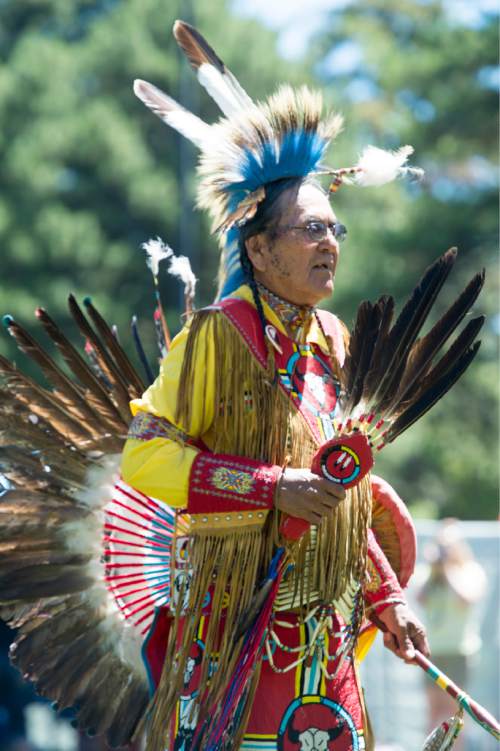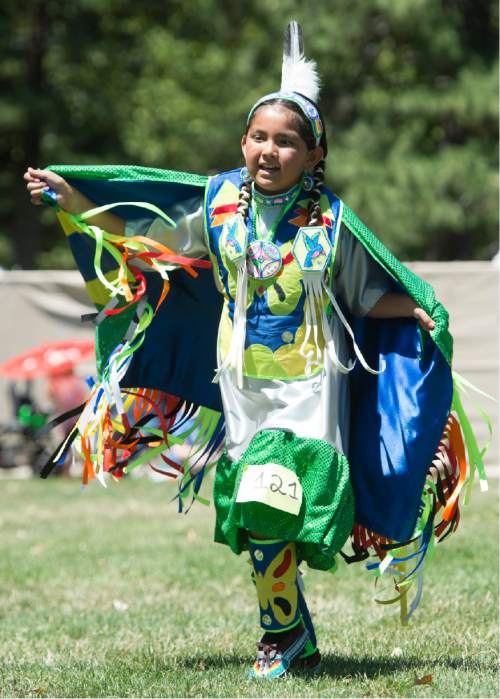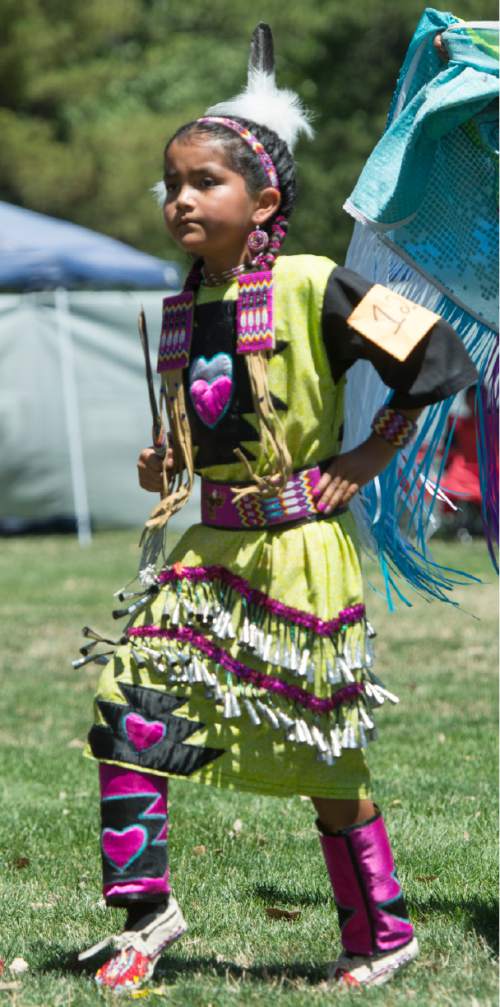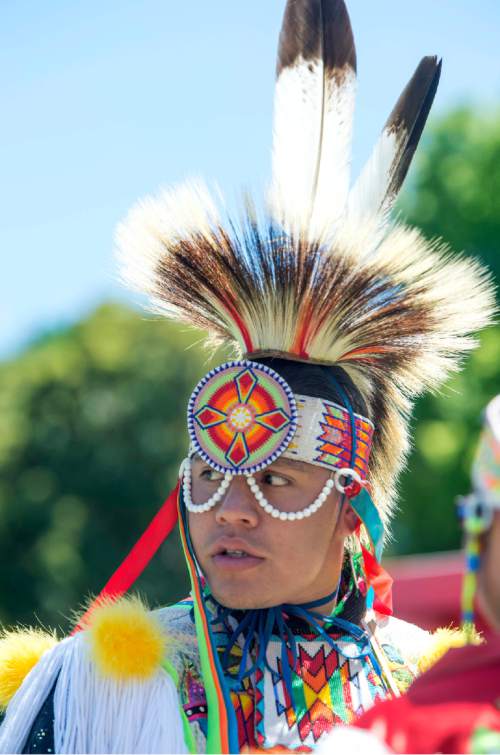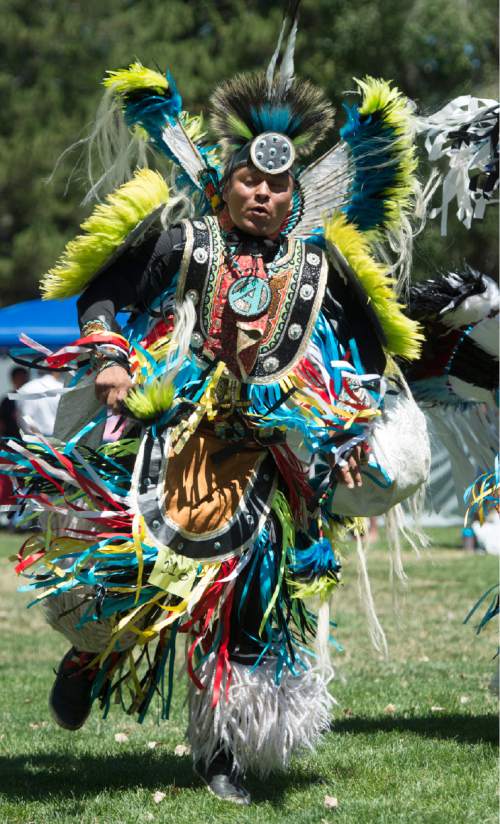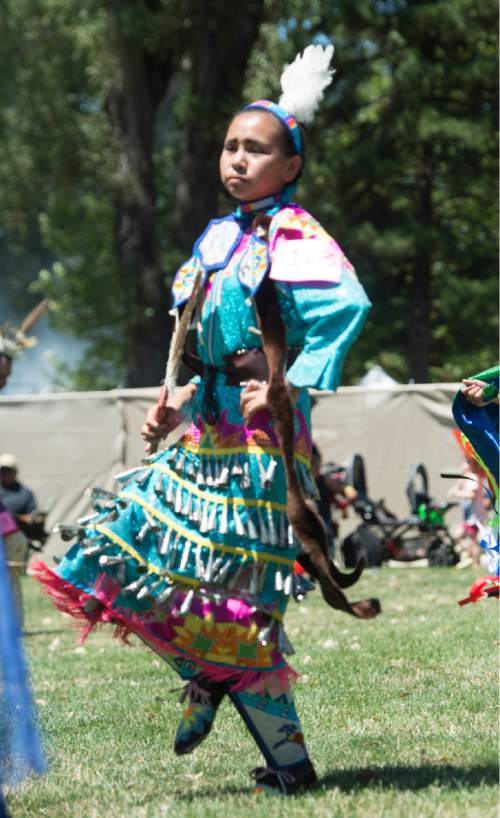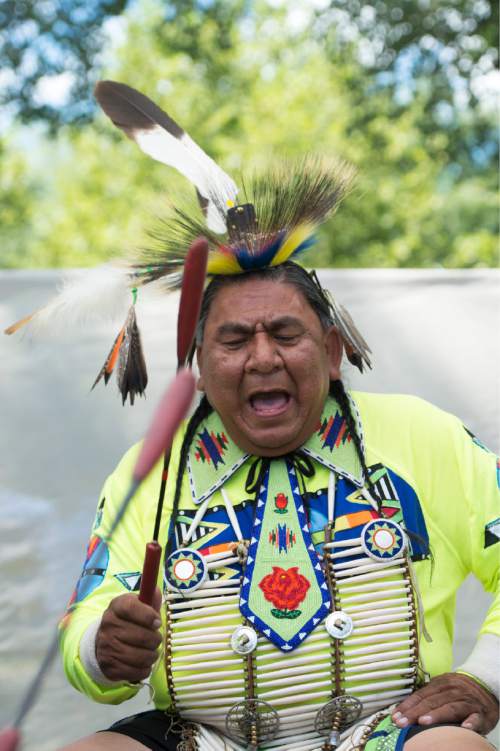This is an archived article that was published on sltrib.com in 2015, and information in the article may be outdated. It is provided only for personal research purposes and may not be reprinted.
Outside the circle of chanting and singing, Cal Nez stops passers-by, handing out free tickets.
Inside the chain-link fence and canvas canopies, Native American dancers and musicians put on a show Friday for the annual Native American Celebration in the Park — a longtime addition to Days of '47 festivities marking the entry of Mormon pioneers into the Salt Lake Valley.
Most spectators stayed outside. Rather than pay the $10 entry fee — which goes back to the performers as prize money — they attempted to climb the fence for a better view.
Though he didn't ask kids to climb down from the fence, Nez, the event's founder and president, continued to hand out free tickets. The event isn't about the money, he says. It's a celebration of culture — and of shared values.
"We want to reach out to the people," he said. "I love my people. I want my culture to be heard … and I want to be able to reach out to other cultures."
Since starting the event 21 years ago, Nez said, reserving a venue each year has become an uphill battle. The powwow, which starts whens the Days of '47 Parade wraps up, has to pay as much as $10,000 to reserve space in the park. And each year, he said, some issue arises that brings the powwow's organizers into conflict with city government.
Because the 24th fell on a Friday this year, Nez said he'd planned to expand the powwow and make it, for the first time, a two-day event — a move he hoped would make it seem more worthwhile for the performers who travel from out of state.
But the city denied his request for a two-day permit, forcing organizers to move their second day of festivities to Library Square.
"It's unfortunate, but it is what it is," he said, "and it creates a lot of unnecessary stress for everybody."
City offices were closed for the state holiday Friday and mayor's spokesman Art Raymond could not be reached for comment.
But Nez wants to keep the subtext of conflict out of the event itself; it's not appropriate for the atmosphere at the powwow, he said.
"The powwow is about brotherhood, peace and especially family."
That last point, he said, is the reason why Utah's Native American community wants to celebrate the 24th with a powwow. They don't want to supplant the pioneer-related celebrations, he said. They want to add to them and celebrate what Utah's Mormon settlers and native populations have in common — a strong belief in the importance of family.
"If you're talking about family and heritage," he said, "that's what we're doing here."
Linda Pete, an eastern Shawnee dancer from Poulson, Mont., said that was the reason she started bringing her children to powwows in the first place.
"The powwow circle is like a family, a protection," she said. Pete wanted her children to experience that culture and learn the traditional lessons of family and respect that came with it. She said she'd hoped it would keep them out of trouble.
Her daughter, Sierra, is a student at the University of Utah. She performed a women's fancy dance during Friday's powwow, while her mother performed a Northern traditional dance that she described as an older, slower, but graceful women's dance.
Richard Vigil, a Sandy resident and Southern Ute who made it to the powwow for the first time this year, said he too saw the gathering as a symbol of family.
"The powwow is all the natives together as one family," he said.
At the same time, Vigil said, he is drawn to the powwow by all the elements others — even those outside the native cultures — tend to enjoy.
"Everybody likes to hear the beat of the drum and the crying of the music," he said.
Outside of the circle, thousands of guests browsed dozens of vendors selling traditional art, handmade jewelry and ethnic foods — or, less ethnic foods, including pizza and snow cones.
Vendor Isabelle Johnson, who came up to the powwow from northern Arizona to help sell her mother's handmade jewelry, said sales are good.
But for all their success, Nez said he wishes that the city, the spectators, and Utahns in general would give more thought to the contributions made by Native Americans — both in the past, as well as today.
The Native American Celebration in the Park will draw an estimated 15,000-50,000 spectators each year, he said.
"I'm not sure why people don't see our event as valuable," he said. "People come from Wyoming, California, from all over the Western states. We fill up restaurants. We fill up hotel rooms."
And it's not just about the single event, he said. With any holiday — whether the Fourth of July, the 24th or any other day — when people talk about America and patriotism, Nez said he'd hope to see more recognition of Native Americans.
"With all your celebrations, acknowledge my people," he said. "Acknowledge the Native Americans…because you can't get any more American than this."


